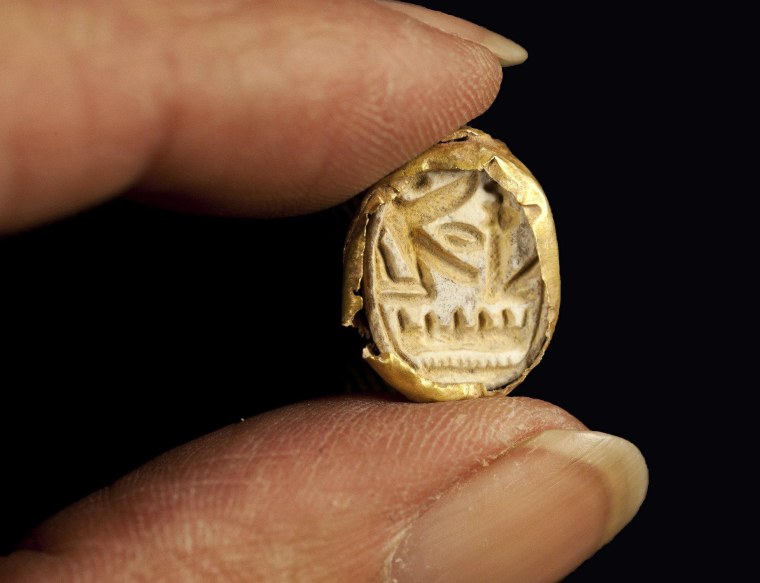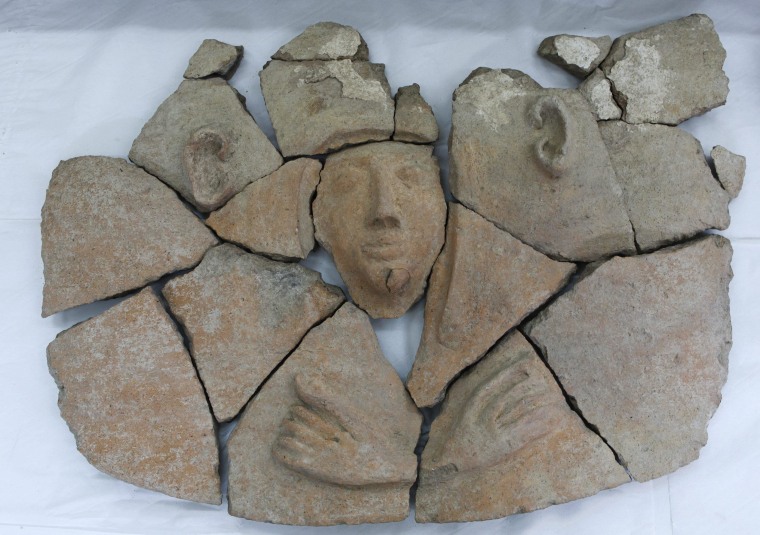JERUSALEM — Israeli archaeologists have unearthed a rare sarcophagus featuring a slender face and a scarab ring inscribed with the name of an Egyptian pharaoh, Israel's Antiquities Authority said Wednesday.
Archaeologists believe the mystery man whose skeleton was found inside the sarcophagus was most likely a local Canaanite official in the service of ancient Egypt. The find shines a light on a period when pharaohs governed the region.
"This is a really beautiful face, very serene," said Edwin van den Brink, an Egyptologist and archaeologist with Israel's government antiquities authority. "It's very appealing."
Van den Brink said archaeologists dug at Tel Shadud, an archaeological mound in the Jezreel Valley, from December until last month. The archaeologists first uncovered the foot of the sarcophagus and took about three weeks to work their way up the coffin.
The lid of the clay sarcophagus is shattered, but the sculpted face remains nearly intact.
Found alongside the new sarcophagus was a scarab seal ring encased in gold, carved with the name of Pharaoh Seti I, who ruled ancient Egypt in the 13th century BC. Seti I conquered the area of today's Israel in the first year of his reign, in order to secure Egyptian trade routes and collect taxes for Egypt, said archaeologist Ron Beeri, who participated in the dig. The man buried in the sarcophagus might have been a tax collector for the pharaoh, Beeri said.


Seti I was the father of Ramses II, often identified as the pharaoh in the biblical story of the Israelite exodus, though Beeri said there is no historical evidence to support that.
DNA tests may be conducted to determine if the man in the sarcophagus was Canaanite or Egyptian, Beeri said.
The recent archaeological discovery came by happenstance. Israel's natural gas company called in archaeologists to survey the territory before laying down a pipeline.